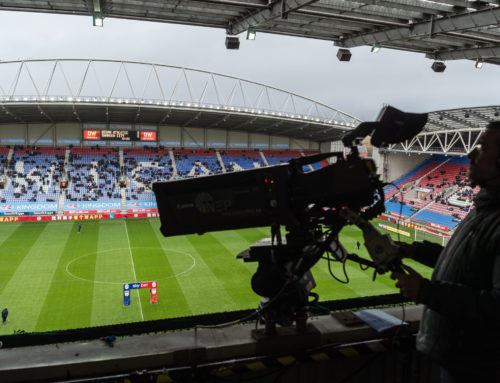BLOG | By Chief Executive Matt Everett
Over recent weeks and months, ClubView has made several presentations to clubs and leagues about the real-time, independent financial benchmarking that our platform offers.
We’ve been working with 9 pilot clubs within the EFL to demonstrate the power of aggregated club data, but why is ClubView so different to existing methods, and why is that difference so important when looking to unlock the wealth of ‘off pitch’ data?
I think it is important at this stage to share my experience and opinion on existing benchmarking methods. I think they are underutilised and undervalued – for three key reasons.
- Benchmarks are not real-time
- There is not enough participation or data to create meaningful benchmarks
- Spurious/Incorrect data is used rendering benchmarks meaningless
ClubView has been developed to solve all of these issues.
Firstly, immediately upon entering data into the ClubView platform, a club can see the benchmarks for that moment in time. This means it is accessible as you are making decisions, you understand the current market, and can use that in your decision making process.
For example, if I am a club Commercial Director, and my club has been promoted. I receive an offer for sponsorship which is 5% higher than the previous season, but in the ClubView platform I can see that the benchmark value for a club of my size in the division above is 15% higher, I can use this information at the time I need it for the negotiation – not receive a report after I have signed the contract.
Secondly, clubs not participating or submitting the data is a big issue with current methods. In my experience, clubs do not engage with benchmarking not only because it is not real-time, but because the insights are not actionable and maybe even because there is not enough participation in a self fulfilling cycle.
Data collection is often ad-hoc and manual in nature, collected via spreadsheet or online form and having to be processed manually by the league or 3rd Party. This also means that various benchmarks may be sent to different heads of club operations, but collating an umbrella view across the club for CEO’s and Boards is difficult.
ClubView solves this by making benchmarks possible by division region or clustered club size – making it far more relevant. The platform also removes outliers (highlighted at time of data entry), and shows ranges, rankings and benchmarks across club operations which can be used there and then to take actionable and measurable decisions that have a very real impact on commercial and financial performance, all in one place.
Thirdly, I’ve seen first hand that sometimes club figures provided are inaccurate or not valid. In order to provide really meaningful insights. Our clearly defined data library makes clear what information should be submitted into the platform for each benchmark – and by excluding outliers from the benchmark where needed this means clubs entering incorrect data will not benefit from the reports.
We have worked on the ClubView platform over the past 2.5 years to solve these flaws with existing benchmarking methods within the industry.
Coupled with us being independent, and having clear and transparent data methodologies in place for our benchmarking, and our vision to make this accessible and possible across the whole industry we feel that our approach really does revolutionise financial benchmarking compared to existing methods.





